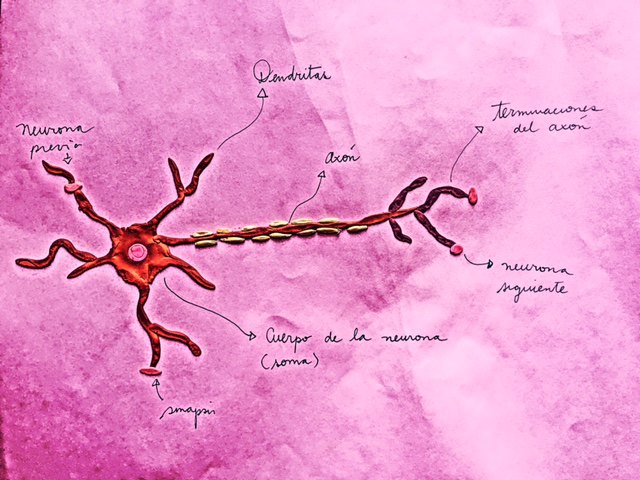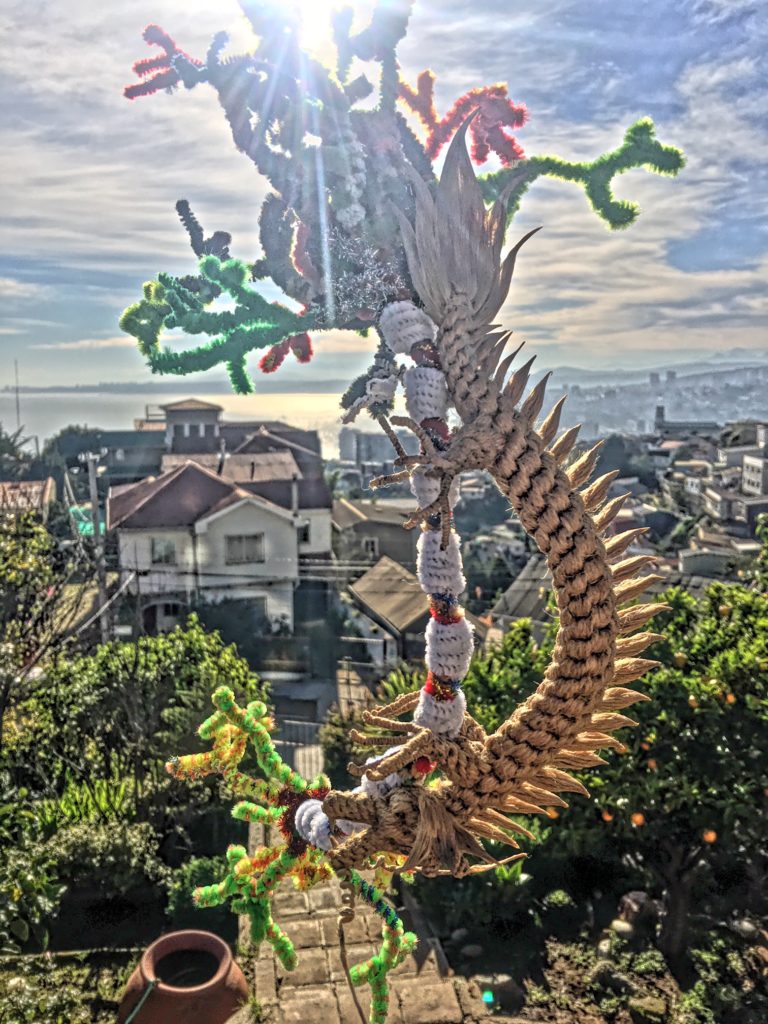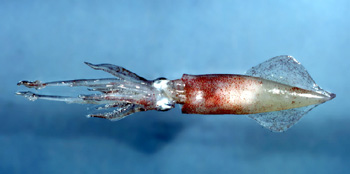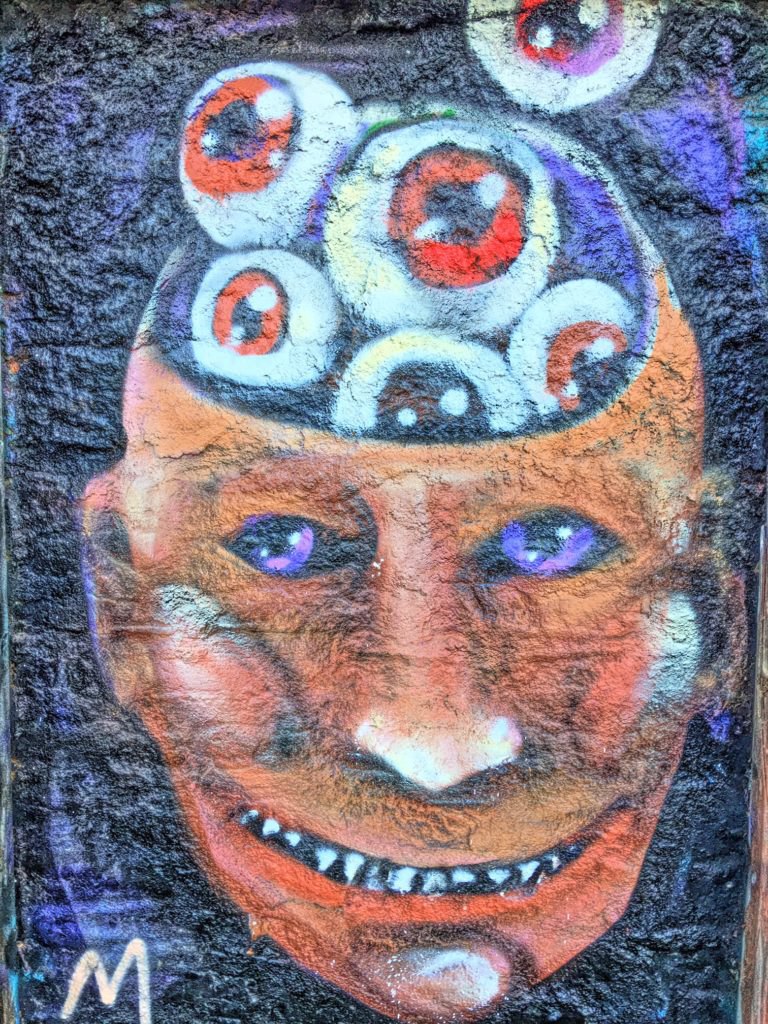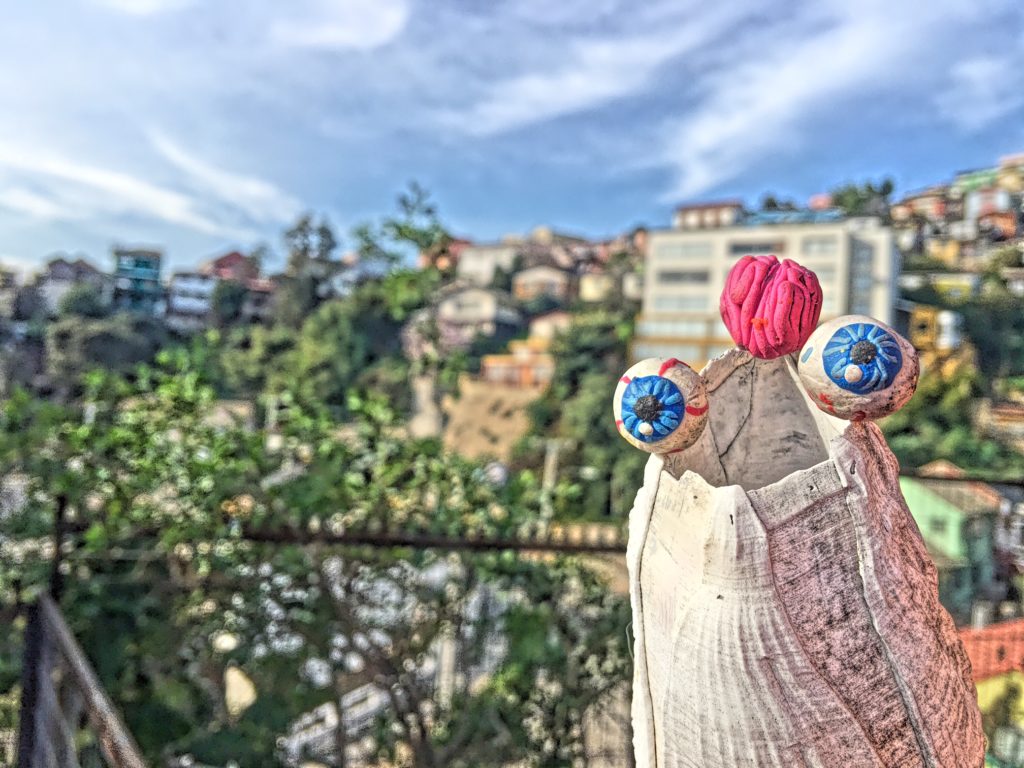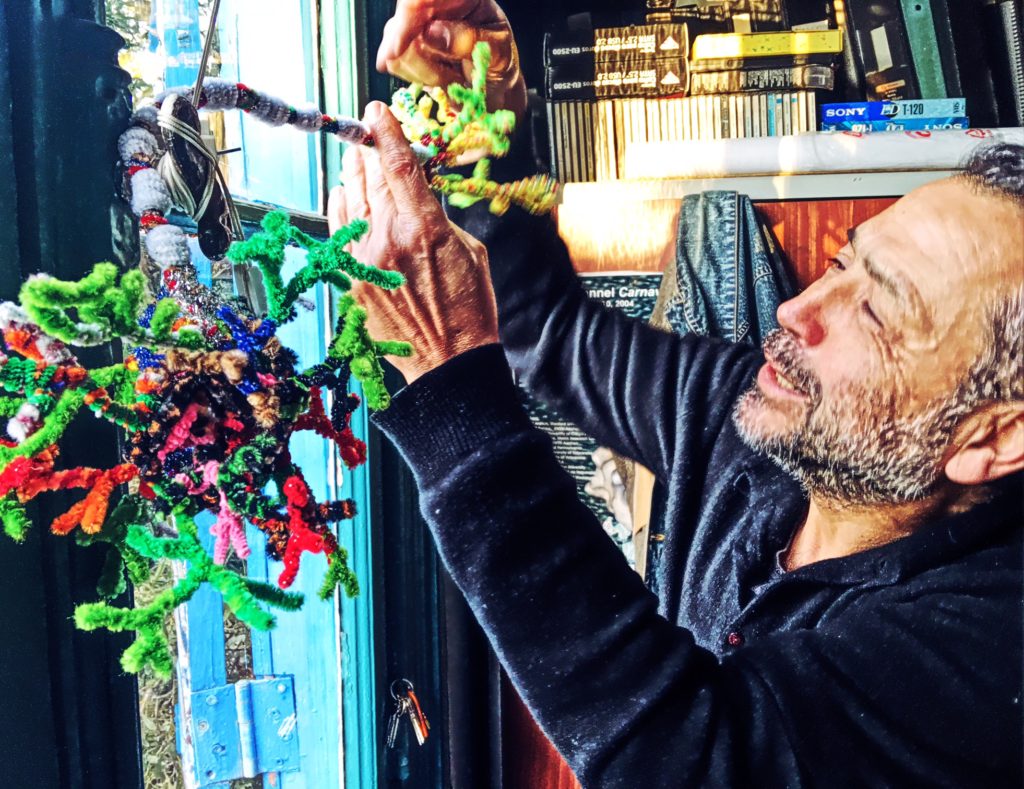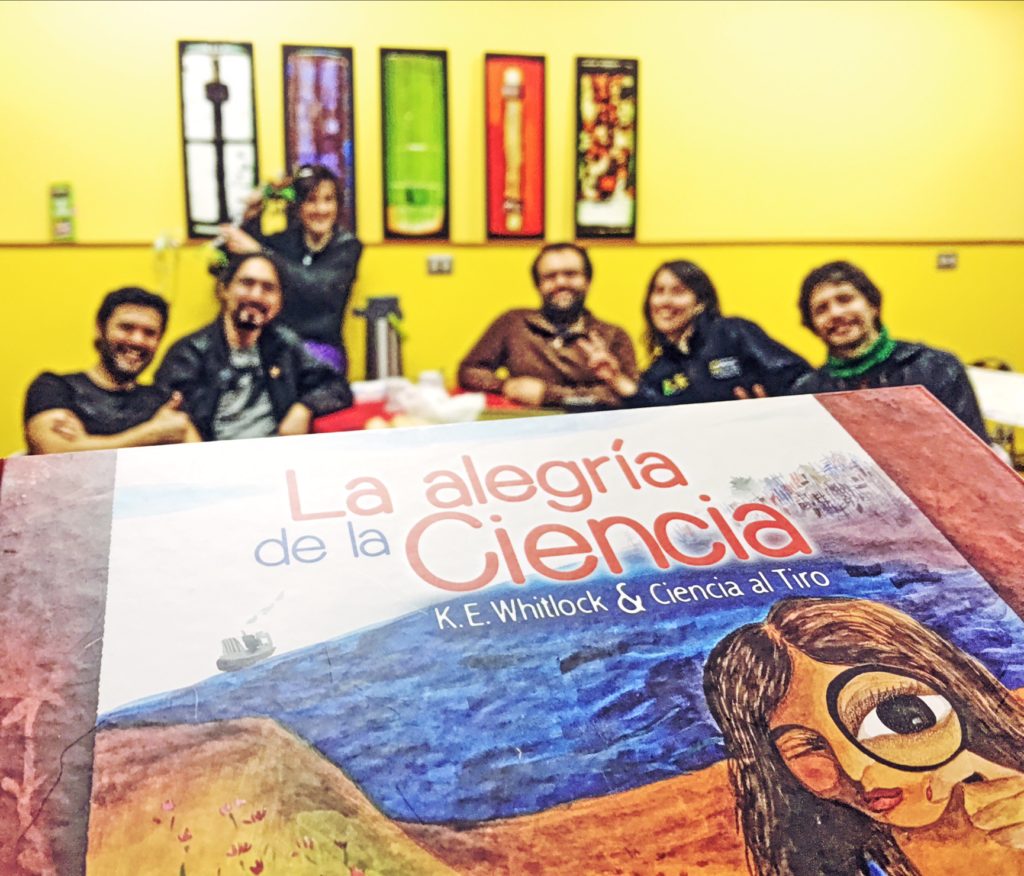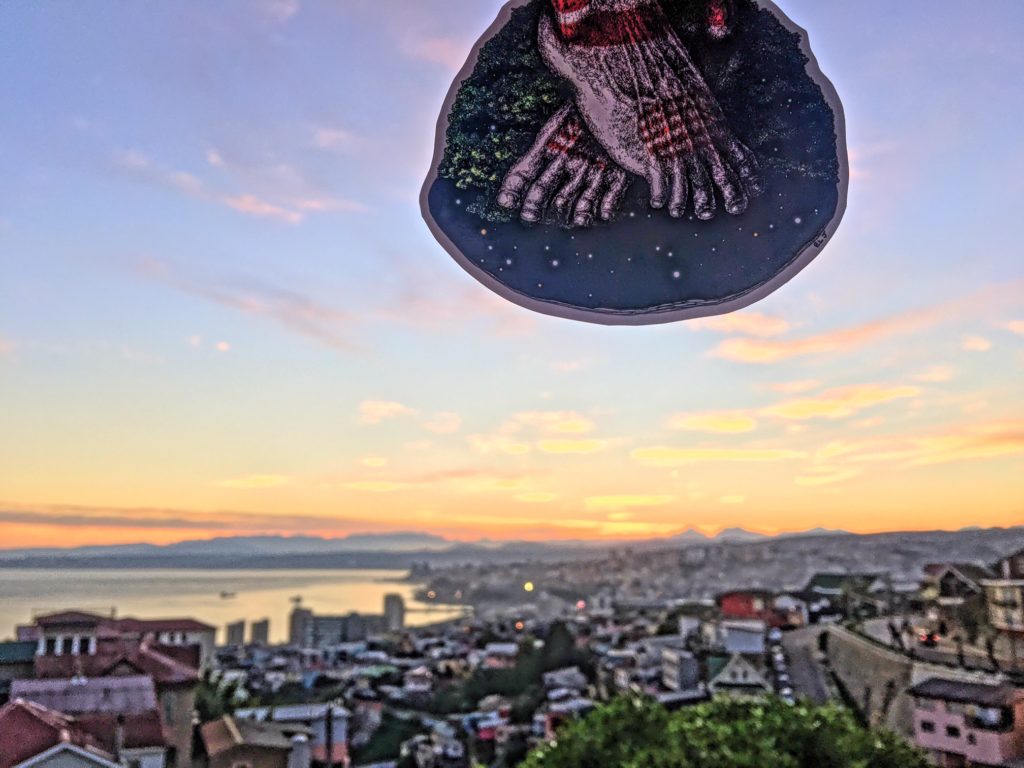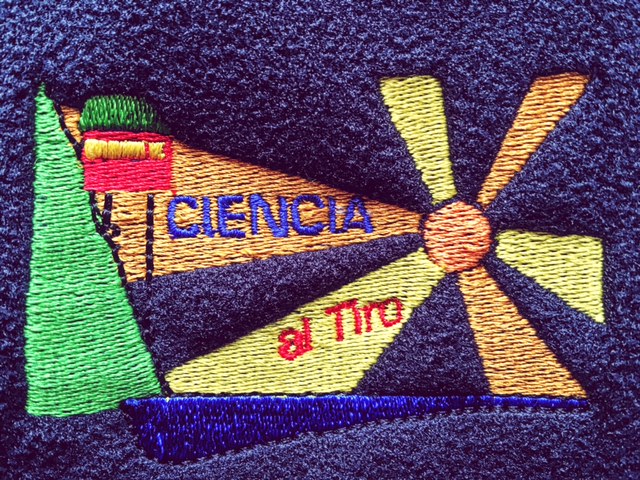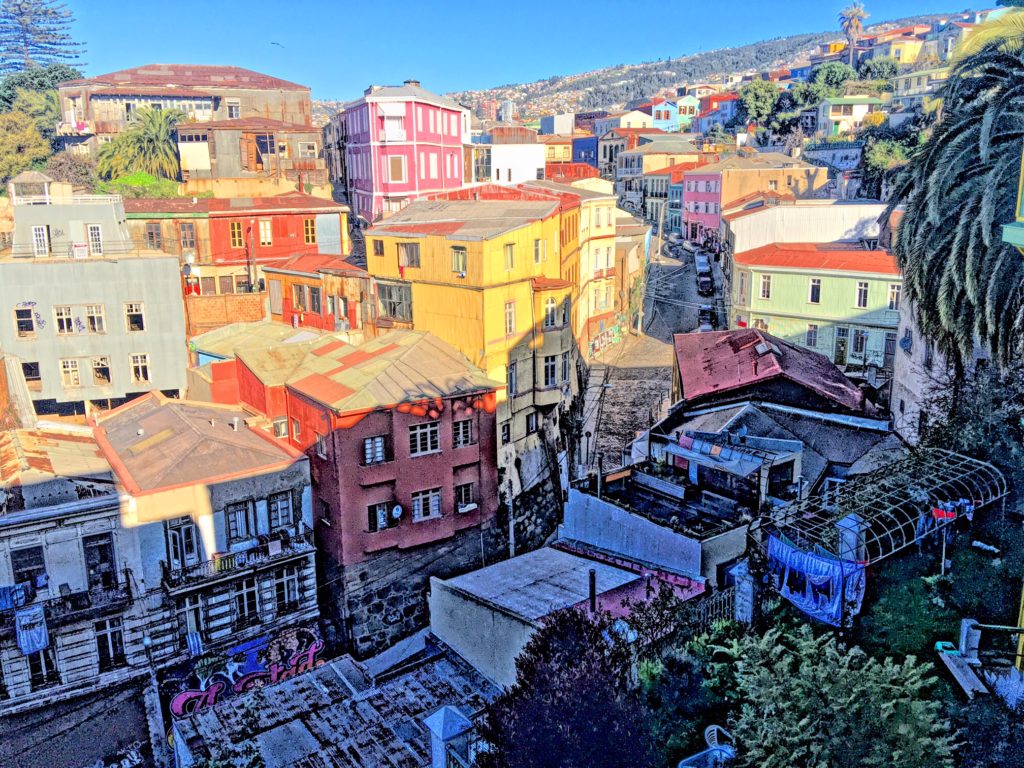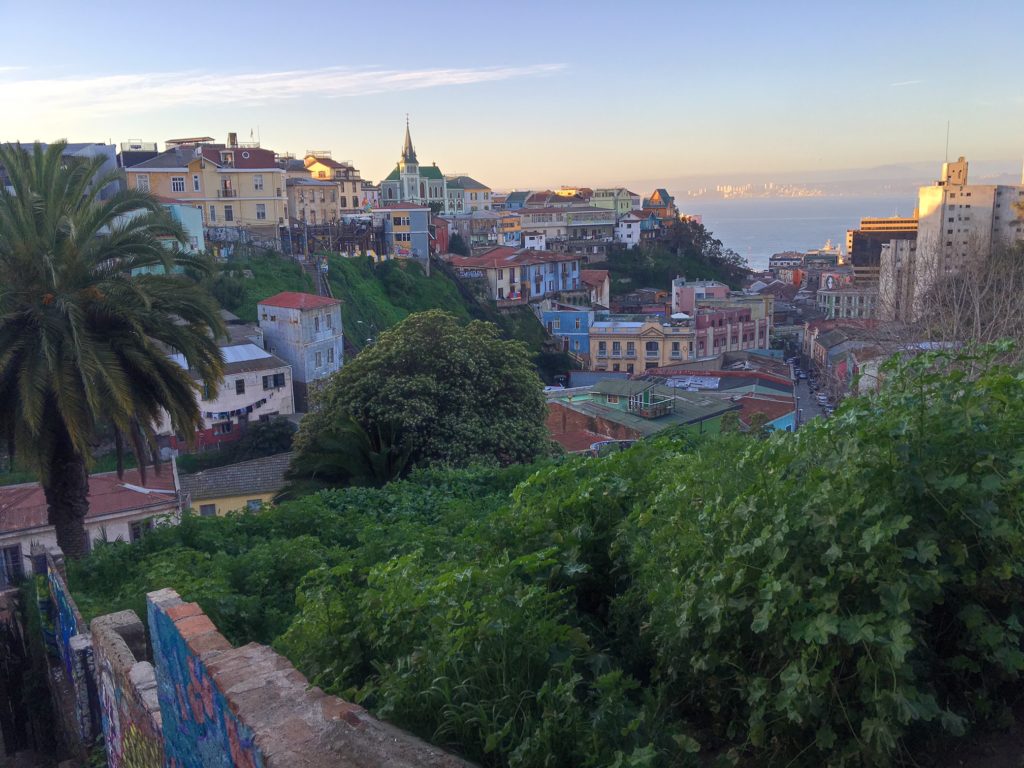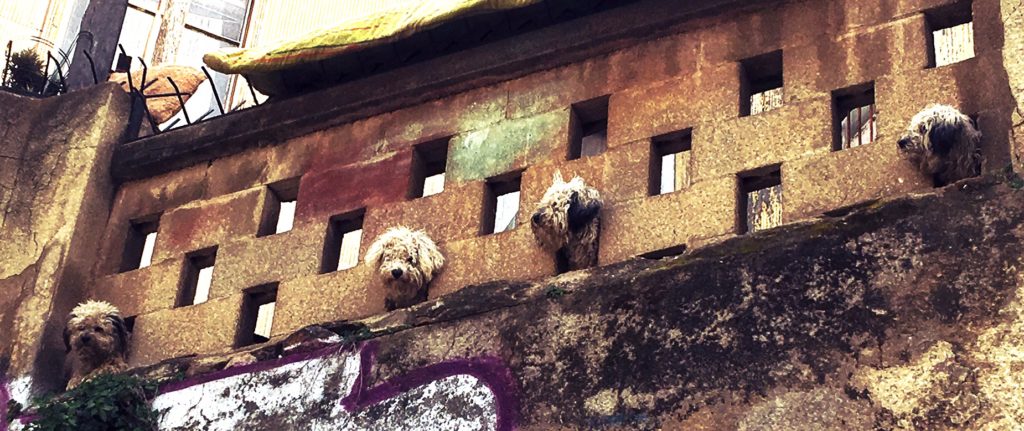NW Noggin “charged” south – way south! – to the dramatic, artistically and scientifically rich central coast of Chile, to visit the region where neuroscience blossomed in the second half of the last century, and explore potential links with a celebrated outreach program in Valparaíso…
Neurons, of course, carry messages – information about sensory details, motor output to move muscles and generate behavior, and the processing of socially relevant stimuli including language and direction of gaze – all in the form of electric currents flowing along axonal wires…
Current is the movement of charged particles, and in the case of neurons these particles are ions derived from diet, including sodium (Na+), chloride (Cl-), calcium (Ca++) and potassium (K+). A Noggin pipe cleaner axón del norte with a racing dragon of moving charge is depicted below, above los cerros (the hills – the many hills!) of Valpo…
Over a century ago, a German physiologist named Julius Bernstein attempted to explain the charge difference detected across a neuron’s membrane when it was not transmitting current (a “resting potential difference” between inside the neuron’s membrane and out) – and the rapid redistribution of ions across that same membrane which occurs when a neuron fires, carrying some informative message (i.e., the fast-shifting, mobile “action potential”).
Bernstein hypothesized that a neuron’s membrane must permit certain ions to pass through at rest (particularly potassium), and then somehow change its permeability (a process referred to at the time as “membrane breakdown”) to let additional positive ions travel inside the neuron when the cell is stimulated…
Many neuroscientists were naturally interested in electrical transmission, and became known as “electrophysiologists,” as they investigated the electrical nature of information processing in living cells. However, mammalian neurons are small, with narrow axons, and exploring ion distribution and re-distribution was difficult in the early to mid-20th century.
However, scientists were thrilled to discover that squid found off the coast of Woods Hole, Massachusetts, known as longfin inshore squid (Doryteuthis pealeii) had large diameter axons (up to 1mm – visible without a microscope!), making experimentation much easier. The Nobel Prize winning work of A.L. Hodgkin and A.F. Huxley, which elegantly described ion movements underlying resting and action potentials, depended upon access to these giant nerves…
And Chile’s Pacific waters host an even larger cephalopod, known as the Humboldt squid (Dosidicus gigas). Unlike the Atlantic variety, this animal was initially accessible all year long. As a result, in 1962 the University of Chile established the Laboratory of Cell Physiology in a former brothel in Montemar, a few miles north of Valparaíso where Chileno scientists, including Francisco Benzanilla and Mario Luxoro, worked alongside many visiting electrophysiologists from Europe and the United States.
Unfortunately, the squid mysteriously disappeared in 1970, and scientists turned to other invertebrates, including the barnacle. Happily, the squid is back now in coastal waters… ?
LEARN MORE: Neuroscience – The great squid hunt
However, drawing on the extensive neuroscience heritage of the region, the Center of Cellular and Molecular Neuroscience was established at the University of Valparaíso in 1999. Today, it is known as the Centro Interdisciplinario de Neurociencia de Valparaíso (CINV), and offers exceptional graduate programs in neuroscience…
David Naranjo, who studies the physical parameters of voltage-gated K+ channels and what structural features determine the rate of K+ flow, introduced me to the Center…
LEARN MORE: David Naranjo, CINV
LEARN MORE: Effective pore size and radius of capture for K+ ions in K-channels
CINV is also home to an innovative outreach program, known as Ciencia al Tiro! Al Tiro means right now, and is a “chilenismo” (Chilean-specific phrase) meaning the bang of a starter’s pistol. I was honored to meet Kate Whitlock, the Director of the program, and her many talented and eager graduate participants in Playa Ancha, the university district…
Kate is an olfactory neuroscientist keenly engaged in improving science education in Chile, and her accomplished graduate participants reminded me of our own Noggin volunteers. I enjoyed watching their work with students from La Escuela República Árabe Siria, in a beautiful and energy efficient building Kate designed and built herself…
Over welcome empanadas and Nescafe, we discussed the possibility of merging the extraordinary traditions of neuroscience research and mural art in the city of Valpo, along the lines of our own STEAM efforts in the Pacific Northwest. Kate’s school building is filled with art, as is the creative city that she calls home…
But can you imagine enormous, inspiring, eye-catching murals by Inti, Teo Doro and other celebrated artists, depicting the electrical signals of life measured in the giant squid..?
Kate and her students have already written and illustrated a book about the excitement (and happiness!) of pursuing science, and were recently awarded a grant to develop a series for TV!
We also discussed the possibility of international exchange – working not only across disciplines, but also the equator, to enthuse, educate and inform academic priority students about opportunities for learning, discovery and connections…
Such experience also hugely benefits university students, improving their teaching, their facility with languages, their ability to explain their research to a broader public, and their skill in working with others.
We definitely look forward to exploring opportunities to collaborate, and promised to keep in touch! Many thanks to Kate and her students for a warm welcome to Ciencia al Tiro.
LEARN MORE: Katherine Whitlock, CINV
LEARN MORE: Bill Griesar del programa NWNoggin visita Ciencia Al Tiro
LEARN MORE: Ciencia al Tiro
Valpo: an unusually rich mix of art, culture, history and science…
Also: dogs and bikes!
Y ascensores – a nice way to navigate the many cerros…
Many, many, many thanks to David, Cecilia, Gabriela and Pablo Naranjo-Araneda (mis weones :), for their friendship and hospitality in this astonishingly beautiful “puerto loco…”




